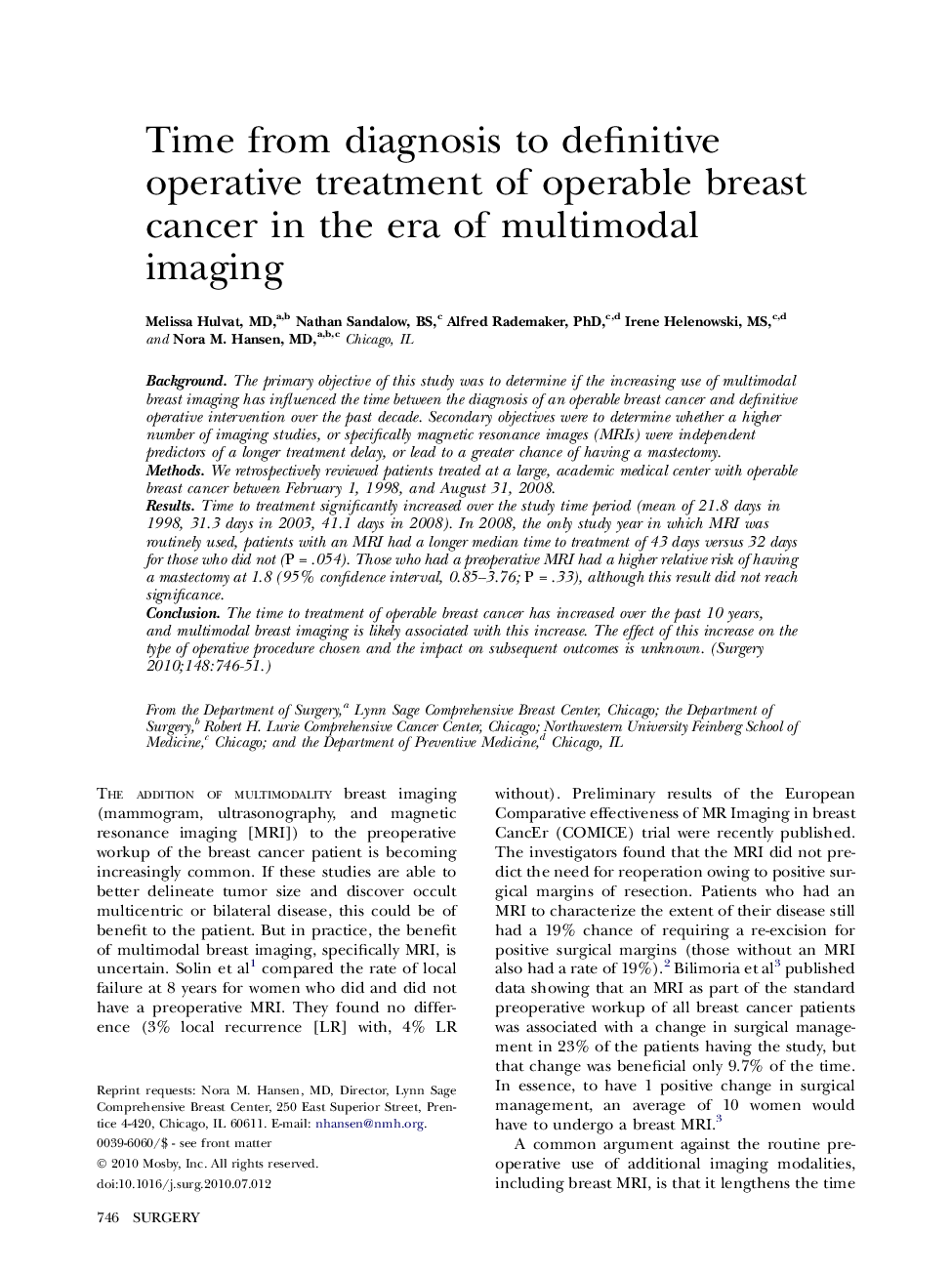| Article ID | Journal | Published Year | Pages | File Type |
|---|---|---|---|---|
| 4309046 | Surgery | 2010 | 6 Pages |
BackgroundThe primary objective of this study was to determine if the increasing use of multimodal breast imaging has influenced the time between the diagnosis of an operable breast cancer and definitive operative intervention over the past decade. Secondary objectives were to determine whether a higher number of imaging studies, or specifically magnetic resonance images (MRIs) were independent predictors of a longer treatment delay, or lead to a greater chance of having a mastectomy.MethodsWe retrospectively reviewed patients treated at a large, academic medical center with operable breast cancer between February 1, 1998, and August 31, 2008.ResultsTime to treatment significantly increased over the study time period (mean of 21.8 days in 1998, 31.3 days in 2003, 41.1 days in 2008). In 2008, the only study year in which MRI was routinely used, patients with an MRI had a longer median time to treatment of 43 days versus 32 days for those who did not (P = .054). Those who had a preoperative MRI had a higher relative risk of having a mastectomy at 1.8 (95% confidence interval, 0.85–3.76; P = .33), although this result did not reach significance.ConclusionThe time to treatment of operable breast cancer has increased over the past 10 years, and multimodal breast imaging is likely associated with this increase. The effect of this increase on the type of operative procedure chosen and the impact on subsequent outcomes is unknown.
